- Home
- Ian Buruma
Inventing Japan: 1853-1964 (Modern Library Chronicles) Page 10
Inventing Japan: 1853-1964 (Modern Library Chronicles) Read online
Page 10
After the first victories in 1937, more and more Japanese had been troubled by the “holy war” in China. Japanese war movies of the time were surprisingly honest in showing hardships suffered by the common soldiers—though not, with rare exceptions, of their victims. Wartime propaganda rarely focused on the wickedness of Japan’s enemies. Films celebrated the spirit of self-sacrifice, of everyone doing his bit for the nation, the poor soldiers stuck in the Chinese mud as much as the people back home. There was no joy in the seemingly endless battles and skirmishes in China, which never produced the desired result of Chinese submission. The government didn’t appear to know what to do, and besides, all the propaganda about a new Asian order, based on fraternal love and cultural kinship, sounded hollow as long as Japanese were fighting fellow Asians, no matter how inferior they were deemed to be to the sons of the divine empire.
Until the war with the West, Tokyo was still a pretty Westernized place. People played baseball, even though American baseball terminology was being laboriously replaced with Japanese phrases. Hollywood movies were shown. People listened to Western music, classical and modern, and read Western books. German and Italian music and books were never proscribed. What was purged from Japanese life between 1941 and 1945 was the West associated with the “Anglo-Saxons”—that is to say, everything Japanese liberals since the Meiji Restoration had admired and tried to emulate. The Japanese war was, among many other things, a war against liberalism.
The political parties, whose voices had been largely stifled already, were dissolved in 1940 and replaced by the Imperial Rule Assistance Association, designed to make “one hundred million hearts beat as one,” from the chiefs of staff down to the lowliest (but invariably bossy) block leaders of local neighborhood associations. There were still Diet elections, but the candidates were almost all reliable hard-line nationalists put forward by the IRAA. An extreme form of emperor worship was imposed in every institution, beginning with the primary schools. At the mere mention of the emperor, people were required to jump to attention. The Japanese spirit was turned into a quasi-religious cult. People were told that self-denial, endurance, and sacrifice were uniquely Japanese virtues, hence those many war movies focusing on hardship. Spiritual strength and sheer force of will would overcome all material obstacles.
Racial purity was as much a part of wartime propaganda in Japan as it was in Germany, though not with quite the same genocidal consequences. Since the official target of Japanese propaganda was liberalism, in the sense of individualism, pluralism, materialism, capitalism, and democracy, Japan and Germany were fighting the same idea of the West. But while the Nazis saw Jews as the embodiment of all these evils, the Japanese were told to smash the “Anglo-American beasts” represented by Churchill and Roosevelt, depicted in cartoons as depraved top-hatted plutocrats. The English language itself was thought to be a form of pollution. One wartime cartoon shows a Japanese student dumping his English phrases (“You are a dog”) into a rubbish bin, while his mother, in the manner of a Shinto priest, sprinkles purifying salt around.
After almost a hundred years of Westernization, the Japanese were now to be Asians with a vengeance. Not only would the Imperial Armed Forces fight a holy war to kick the white man out of Asia, but all vestiges of Western, liberal thinking would be purged from Asian minds. This new Asianism was as overwrought and false as the Westernized manners of waltzing and whist-playing grandees in the early Meiji years. Intellectuals and military propagandists used such phrases as “overcoming modernity” or “overcoming the West,” as though the two meant the same thing, and the whole modern project in Japan had to be turned upside down. One can see why the self-aggrandizing idea of Asian pride, embodied by Japan as the philosophical and political mentor of all Asian peoples, had a strong emotional appeal. But the new Japanese order, though in part an extreme version of eighteenth- and nineteenth-century nativism, owed as much to Western ideas as did the Marxism of Taisho-period intellectuals. Much of it was borrowed from European fascism and grafted onto more east Asian habits of thought.
However, Nazi Germany and Japan were not the same. National socialism was a revolutionary idea, carried out by a populist party. The Japanese elite, in the military, imperial court, business, and bureaucracy, used a form of fascism to impose order on an enterprise that was forever threatening to get out of hand. The Control faction in the armed forces, represented by General Tojo and backed by the emperor, tried to stay ahead of the more radical Imperial Way faction to avoid a revolution. Hitler and his satraps already had grandiose designs on the world before they came to power. The Japanese elite, beyond sharing a dislike for liberalism in all its forms, seemed to be cobbling together their political dogmas to justify an endless string of faits accomplis. And at least some of them knew even before the attack on Pearl Harbor that Japan had embarked on a mission of national suicide.
—
Why, then, did they do it? What possessed Admiral Yamamoto Isoroku, who had warned Prime Minister Konoe that Japan could successfully challenge the United States for one year at the most, to go along with the attack on Pearl Harbor? Again, the most likely explanation is not a führer’s diktat, as in Germany’s attack on the Soviet Union, but weakness, even paralysis, at the highest levels of Japanese government. If few deeply desired a war with the West, nobody, except possibly the emperor himself, was able or willing to stop it.
Preliminaries to the final showdown began in January 1940, when the United States, “in the interests of national defense,” stopped selling aviation fuel and scrap metal to Japan. The Japanese knew that this would make it impossible for them to maintain their military presence in China for long. The Americans were aware of this, too, hence their new policy. Further restrictions on all grades of iron and steel scrap followed. Japan had a clear choice now: to withdraw from China or move into Southeast Asia for its raw materials. Since military control of China was deemed essential to Japan’s national survival, the first option was out of the question. Germany invaded France. Japan then burned more bridges with the United States by joining the Axis powers. In July 1941, Japanese troops occupied southern Indochina. The Americans, as well as the British and the Dutch, now decided to block the export of oil. Japanese newspapers, in their usual tone of victimhood, reported that Japan’s lifeline was being strangled by the ABCD powers: American, British, Chinese, and Dutch.
Japan could still withdraw from China, but General Tojo, the minister of war, said there could be “no compromise on the stationing of troops in China.…” Since the armed forces could not carry on without oil, this meant going for the oil-rich Dutch East Indies. There was, of course, one other option, suggested by the naval chief of staff, Admiral Nagano Osami, five days before the U.S. oil embargo. Since time was running out, and the navy was consuming four hundred tons of oil a day, Japan should attack the United States immediately, for that would offer the best “chance of achieving victory.” If the Japanese occupied the Philippines, the navy would surely be able to control the Pacific.
Admiral Nagano was still a little ahead of his colleagues, however. Neither the emperor, nor Tojo, nor Konoe wanted to take on the United States, or at any rate not just yet. It was decided to string out diplomatic negotiations while preparing for a possible war. Various proposals were put to Washington. Japan would withdraw from Indochina once the “China incident” had been settled to Japan’s satisfaction and economic sanctions were lifted. Or Japan would consider making peace with China, as long as Japanese troops could stay in China to guarantee regional security. Or Japan promised not to grab other parts of Southeast Asia, if oil supplies could be resumed. None of these proposals found a positive response. What to do now? The Japanese leaders decided to wait until October. If the Americans hadn’t seen it Japan’s way by then, war would be inevitable.
October came. Konoe invited the army and navy ministers, the foreign minister, and the president of the planning board, Suzuki Teiichi, to his private residence. General Suzuki described this fate
ful meeting at the Tokyo trials five years later: “It became quite clear as the result of this conference where the thorny question lay. The Navy really thought that the war with America was impossible but did not desire openly to say so. The Army did not necessarily desire war, but vigorously objected to the withdrawal of troops from China. The Foreign Minister was firmly of the opinion that without consenting to the withdrawal of the armed forces from China, the negotiation with America offered no prospect of success. The only way for the Prime Minister to avoid war was, therefore, either to make the Navy formally declare its real intentions, or to make the Army understand the unexpressed intentions of the Navy and agree to the withdrawal of the armed forces. I saw that the Prime Minister was in a predicament because personally he felt himself unequal to the task of persuading the Navy or the Army.”*
No one, in other words, felt able to take responsibility for a coherent policy. The prime minister had no sway over the armed forces. And the army and navy ministers were content to let things drift. The ultimate price was about to be paid for having destroyed the authority of civilian government. The political scientist Maruyama Masao has explained the Japanese catastrophe as the logical outcome of systemic irresponsibility. The emperor, in his view, was like a portable shrine, carried on the shoulders of men who had no idea where they were going but simply reacted to the latest twists of fortune, as though politics were like the weather: a rainstorm here, a spell of bright weather there, and then, suddenly, a terrible earthquake. The word kamikaze, “divine wind,” refers to just such a natural phenomenon in the thirteenth century, when a typhoon blew the fleet of Mongol invaders against the rocks. Whenever they were faced with a desperate situation—Commodore Perry’s arrival in 1853 or the U.S. victories in 1944—Japanese leaders called for a divine wind to save the nation. Just as no one could be held responsible for the earthquakes that destroyed Japanese cities with ghastly regularity, nobody could feel responsible for making war on the West, except possibly the emperor, but then he was a mere shrine.
It is impossible to say how accurate General Suzuki’s account was of the meeting in Konoe’s villa. After all, some military figures had been spoiling for a fight. And Professor Maruyama’s analysis may be a little too schematic. But that there was a systemic problem is clear. The lack of political accountability made it very easy to blame the fate of hundreds of millions on factors beyond human, or at least Japanese, control, on abstractions like “the inevitable forces of history,” or on the ABCD strangulation, or simply on one single American act, such as the famous note from the secretary of state, Cordell Hull, handed to the Japanese ambassador in Washington on November 26, 1941. By that time, Konoe had been replaced as prime minister by General Tojo, who was also war and interior minister.
The Hull note was a “draft mutual declaration of policy.” The United States demanded a Japanese withdrawal from Indochina and China, without specifying when or from which parts of China. There was no mention of Manchukuo or Korea. General Tojo presented this note to his government as an ultimatum, which it was not. It was in fact the Japanese who had already given Washington an ultimatum. If the United States had not lifted economic sanctions by November 15, in exchange for vague promises of Japanese troop withdrawals “after a suitable interval” once “peace was established” in China, Japan would go to war. The Hull note was just an excuse. The plan for an attack on Pearl Harbor had already been made. Navy bombers had been practicing the raid over and over in Kagoshima Bay. The man with the greatest doubts, Admiral Yamamoto, had worked it out down to the tiniest details. He went along with the hope that a devastating shock would mollify American demands at the negotiation table. A show of Japanese spirit would surely be enough to make the decadent, materialist Americans see sense. If not, well, as General Tojo observed: “Sometimes people have to shut their eyes and take the plunge.”
—
Although the Japanese never had a policy of racial extermination, their holy war in Asia did involve extraordinary cruelty. Prisoners of war were tortured and often worked to death. Southeast Asian slave workers were treated even worse than the Western POWs. Hundreds of thousands died of thirst, starvation, and maltreatment along railway lines and on other hard-labor projects. Gruesome medical experiments were carried out on Chinese and some Europeans by special units in China and Manchukuo. Women and girls from Korea, China, and Southeast Asia were forced to work in military brothels; many died, and survivors were often maimed or traumatized for life. There were massacres of civilians in China, Singapore, Malaya, the Philippines, Burma, and elsewhere. The military police, or Kempeitai, was one of the most brutal outfits of the twentieth century.
The holy war took its toll on the Japanese, too. Food became scarcer in the homelands. Rice was already rationed a year before the attack on Pearl Harbor. Deaths from tuberculosis, already high in Japan, went up from about 140,000 a year in the late 1930s to more than 170,000 in 1943. Block leaders and other busybodies informed the thought police or the Kempeitai of any signs of “defeatist” or “anti-kokutai” behavior. People with family connections in the United States, or who had once lived there themselves, were arbitrarily arrested as “spies.” Just the merest suspicion of “foreign behavior” could be enough for a nasty session with the secret police. Women were made to wear rustic “native” dress. Children were taught how to die like soldiers. There was growing resentment in Japan about the oppressiveness and austerity of the militarized life, but people were told to conquer any lingering nostalgia for prewar liberties and comforts with the much vaunted Japanese spirit.
The brutality of Japanese military government, at home and abroad, was made all the more sinister by the propaganda of peace and love. The Kokutai no Hongi, or Fundamentals of the National Polity, promised that Japan would gather the whole world under one imperial roof (hakko ichi-u). When Japan joined the Axis powers in 1940, an imperial edict announced: “To enhance justice on earth and make of the world one household is the great injunction, bequeathed by Our Imperial Ancestors, which We lay to heart day and night.” Prime Minister Konoe said in that same year that the “basic aim of Japan’s national policy lies in the firm establishment of world peace in accordance with the lofty spirit of hakko ichi-u.…” In 1942, General Tojo said that the new Asian order would be established “on the basis of moral righteousness,” with “Japan at its core.”
In 1943, representatives from all parts of the Great East Asian Co-Prosperity Sphere gathered for a conference in Tokyo. Wang Ching-wei was there, representing the collaborationist Chinese government in Nanking, along with José Laurel from the Philippines, Ba Maw from Burma, and the Bengali nationalist Subhas Chandra Bose. Respect for national independence and national traditions was solemnly promised. The Asian delegates posed for a group photograph, with General Tojo in the middle, smiling like a benign patriarch. An official statement was issued: “This Great East Asia Proclamation shows clearly the shared ideals of all Asian peoples. The Great East Asian project is based entirely on justice, and is opposed to the exploitative, aggressive, exclusionary egotism of Britain and America. It will stand as a great lesson that will be revealed to all the peoples of the world.”
The Japanese knew they could not build an east Asian empire with military force alone, so they combined promises of national liberation from Western colonial oppression with a peculiar universal version of Japanese essentialism. The uniqueness of the Japanese spirit would, as it were, be exported to enlighten others. It was as if Japanese propagandists sought to reverse the process of cultural transmission. After centuries of having absorbed the cultures of China and the West, Japan would now compel others to imbibe the culture of Japan. Meiji-era idealists talked about Japan as a teacher of Western modernization. Now those lessons would be strictly Japanese. Shinto shrines were built all over the empire. Koreans and Taiwanese were forced to adopt Japanese names. A generation of Indonesian, Burmese, and Filipino schoolchildren were taught from textbooks about the samurai spirit. It never worked, o
f course. Uniqueness cannot be exported. Most Asians didn’t want to be Japanese anyway. And even those who had looked to the Japanese as liberators and teachers changed their minds when the Japanese army imposed its imperial blessings with brute force.
—
Meanwhile, the Americans got closer and closer to the Japanese homeland. Factional and institutional rivalries inside Japan’s armed services, as well as the traditional fuzziness in its chain of command, made a mess of the country’s war effort. But even if Japan had been led by military geniuses, which it wasn’t, this was a war it could never have won. America simply produced more planes, ships, and other necessary matériel, faster and more efficiently than Japan. Keeping their troops in China was already hard enough for the Japanese. It was impossible for them to defend their positions in Southeast Asia and the Pacific. Japan ran out of everything: oil, fighter planes, food. All it had was people, and after the bombing of the homeland began, that, too, was a rapidly diminishing asset.
Guadalcanal fell in 1942, Tarawa in 1943; the next year it was Kwajalein, then Leyte, Luzon, Guam, Saipan, and finally Iwo Jima, from where B-29 bombers were within easy reach of Japanese cities, which they proceeded to demolish one by one. A Japanese officer wrote a poem about what it was like in Guadalcanal:
Covered in mud from our falls
Blood oozes from our wounds
No cloth to bind our cuts
Flies swarm to the scabs
No strength to brush them away
Fall down and cannot move

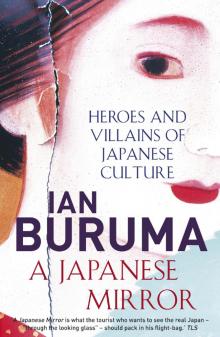 A Japanese Mirror
A Japanese Mirror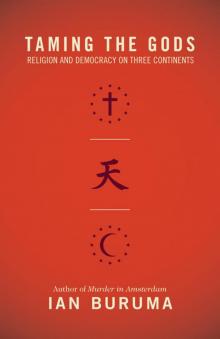 Taming the Gods
Taming the Gods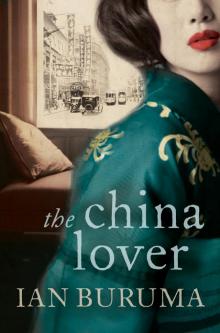 The China Lover
The China Lover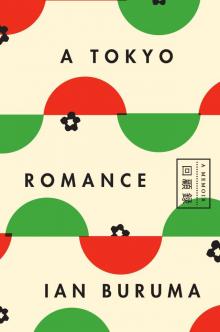 A Tokyo Romance
A Tokyo Romance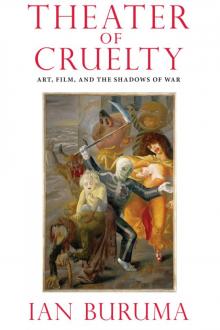 Theater of Cruelty
Theater of Cruelty Year Zero
Year Zero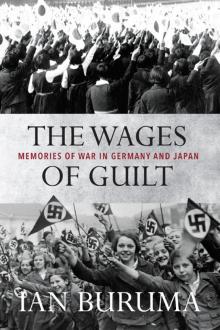 The Wages of Guilt
The Wages of Guilt Murder in Amsterdam
Murder in Amsterdam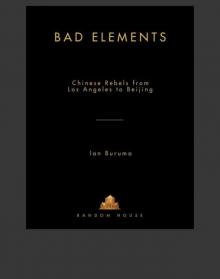 Bad Elements
Bad Elements Their Promised Land
Their Promised Land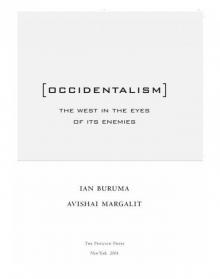 Occidentalism
Occidentalism Anglomania
Anglomania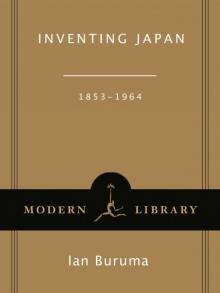 Inventing Japan: 1853-1964 (Modern Library Chronicles)
Inventing Japan: 1853-1964 (Modern Library Chronicles) The Missionary and the Libertine
The Missionary and the Libertine